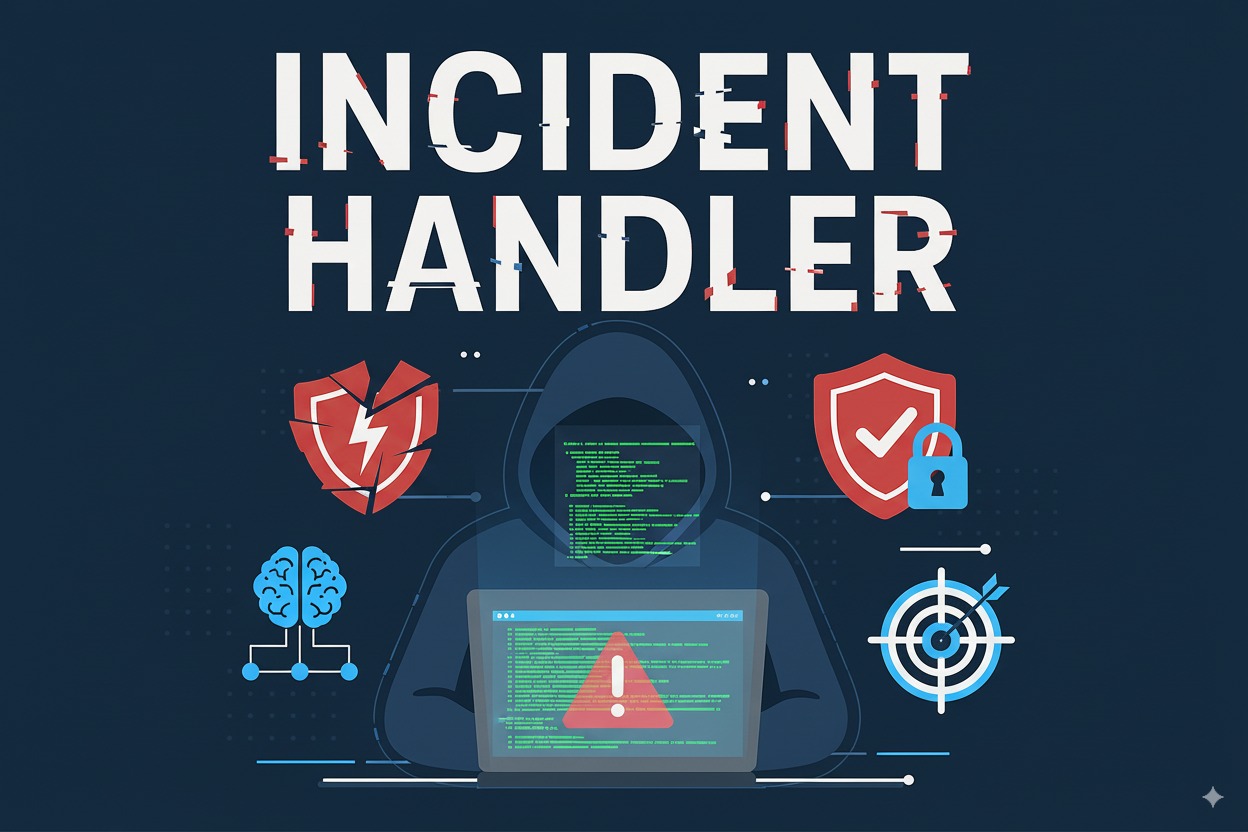Certified Incident Handler
Certified Incident Handler
Description
Incident Handling is all that is involved in managing and responding to cybersecurity incidents. Typically, it refers to the technical and procedural side of detecting, analyzing, and mitigating security threats, as opposed to just monitoring or preventive controls. It encompasses everything from handling small malware infections to responding to complex, large-scale cyberattacks that could impact critical systems and data.
The basic goal of Incident Handling is to minimize the damage caused by security incidents, restore normal operations as quickly as possible, and prevent future attacks.
Examples of incident handling scenarios include data breaches, ransomware attacks, denial-of-service (DoS/DDoS) incidents, insider threats, and phishing attacks. Common tools and techniques used by incident handlers include Security Information and Event Management (SIEM) systems, intrusion detection/prevention systems (IDS/IPS), forensic analysis tools, log monitoring, malware analysis, and frameworks like NIST Cybersecurity Framework or SANS Incident Handling Process.
What Will I Learn?
- Benefits of the Incident Handler Course
- Installation and core concepts of various cybersecurity tools
- Understanding cyber threats, attack vectors, and incident response lifecycle
- Working with intrusion detection/prevention systems (IDS/IPS)
- Requirements of effective incident handling and response policies
- Connecting SIEM tools (like Splunk, ELK, or QRadar) for log analysis
- Working with advanced forensic techniques and evidence handling
- Concepts of malware analysis and threat intelligence
- Utility of incident documentation, interoperability, and compliance standards
- Hands-on with network monitoring, packet analysis, and threat hunting
- Using automation tools, playbooks, and scripts in incident response
Topics for this course
UNIT-I Introduction to Incident Handling & Cyber Kill Chain
Incident handling lifecycle: Preparation, Identification, Containment, Eradication, Recovery,
Cyber Kill Chain & MITRE ATT&CK Framework
Threat actors, their motivations, and common attack vectors
NIST SP 800-61 and SANS incident handling models
Unit-II Reconnaissance and Scanning
Unit-III Exploitation and Gaining Access
Unit-IV Post-Exploitation and Persistence
Unit-V Malware Analysis Basics
UNIT-VI Incident Detection and SIEM
UNIT-VII Incident Containment, Eradication & Recovery
About the instructor
1 Courses
0 students


